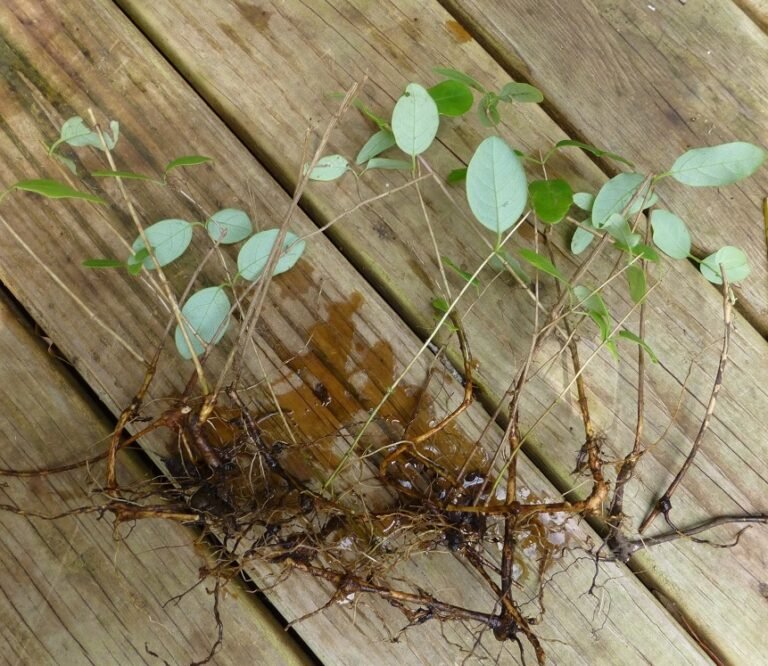Lonicera sempervirens
(Coral Honeysuckle)
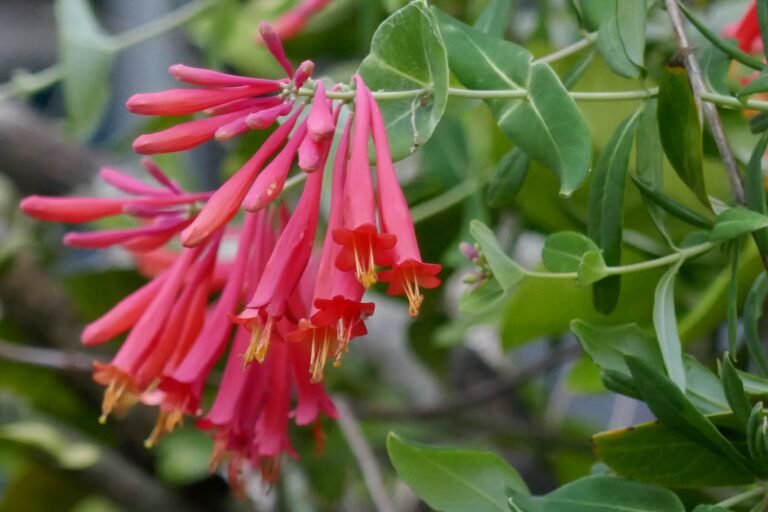
Common Names, Latin Name, and Family
Its common names include coral honeysuckle and trumpet honeysuckle.
The Latin name is Lonicera sempervirens.
It is found in the Caprifoliaceae, or honeysuckle, family.
Form
Coral honeysuckle is a native vine that grows to about 10 to 20 feet.
It spreads by underground runners. Where the stem touches the ground the plant will start to produce roots so these runners can extend the plant by many, many, feet and create a very large area of coral honeysuckle in one spot. They are easy to transplant. Expose the runner to where the roots are and cut the vine before and after the roots to create a new plant.
It twines around supports very well and can be grown upon other vegetation. It does not have the ability to damage the support plant unless it is on the small side. The main stems can get very large in diameter, but do not strangle its support.
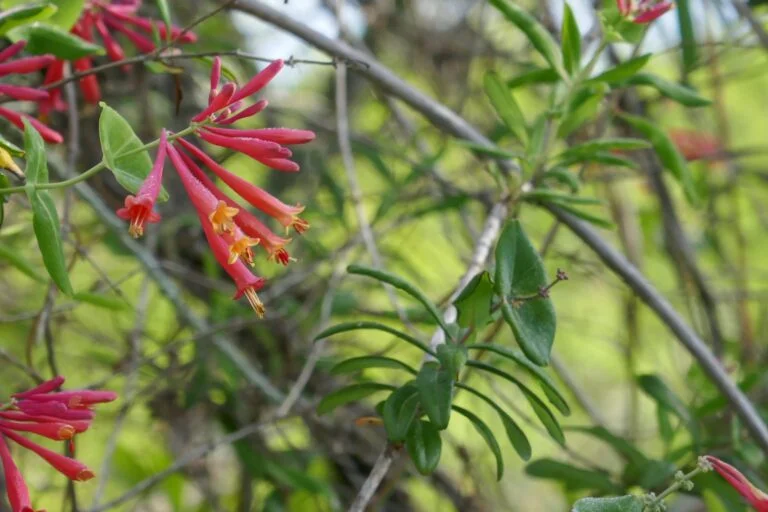
Leaves
Opposite, ovate to oblong with entire margins.
The leaves clasp around the stem and in some instances may look like one leaf with the stem in the center.
Upper surface is green and the lower surface is white.

Flowers
Coral honeysuckle flowers are bright, red, tubular flowers that appear in the spring and summer.
The stamens protrude past the end of the petals and the stigma protrudes even farther.
The long flowers are a favorite of pollinators with long tongues such as hummingbirds, hummingbird moths, and butterflies such as the larger sulphur butterflies. Bumblebees will use the flowers as a nectar source by cutting a hole in the side of the flower to reach the nectar at the base.
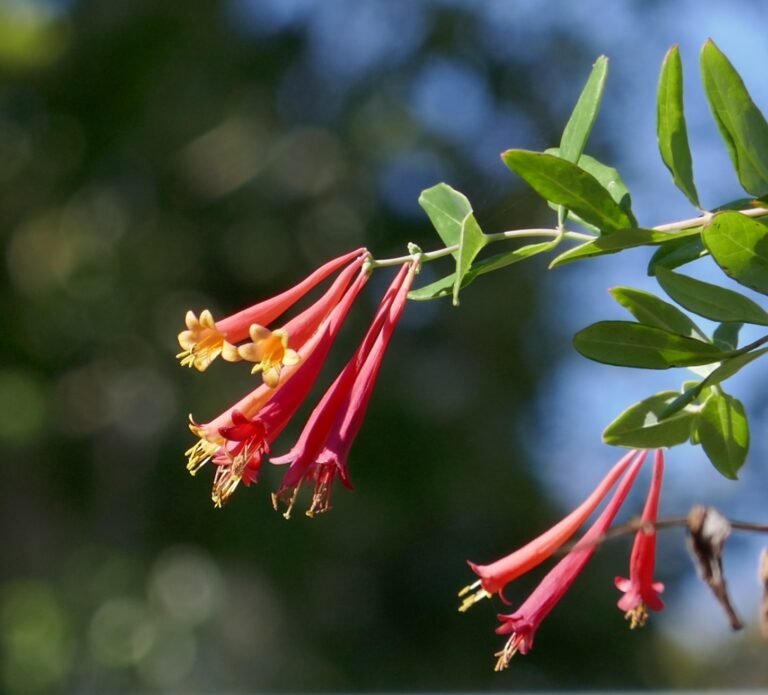
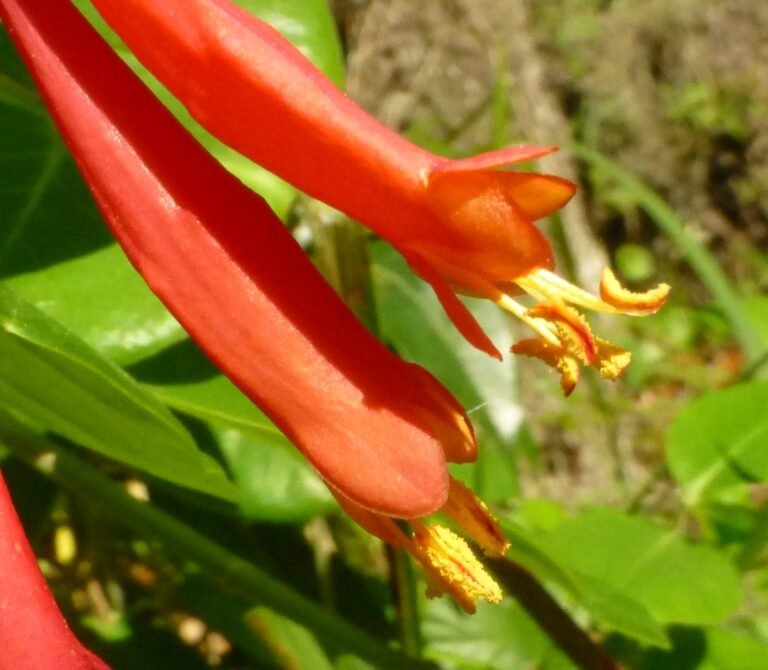
Fruit / Seeds
Once pollinated the flowers will produce fruit.
The fruit starts out as small green berries and then ripens to a larger bright red berry that is eaten by songbirds and small mammals.
The seeds are brown and flat and are contained inside the fruit. Each berry may have one to four seeds.
Volunteers of this native vine that can be found where birds perch and leave droppings since it has fruit that the birds love to eat. That’s why many times it can be found growing along fence rows … because the birds land and leave droppings while they are perched on the fence.
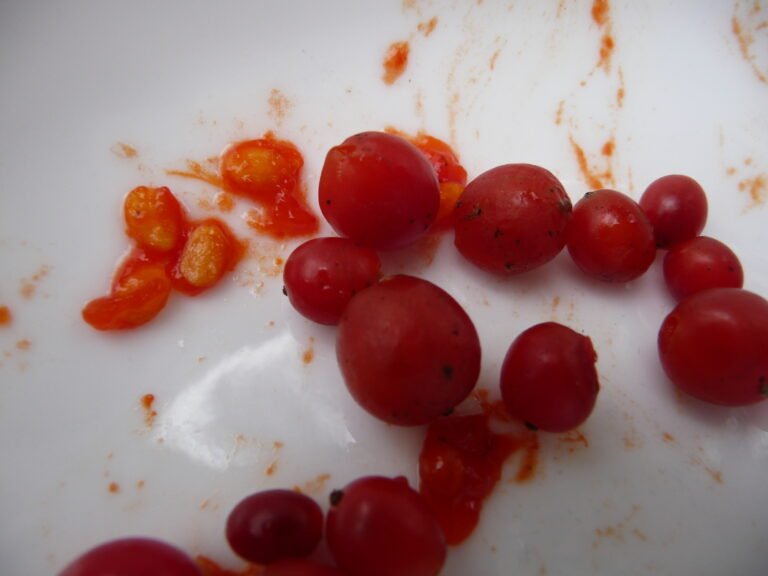
Habitat
It occurs naturally in disturbed sites, thickets, open hammocks and fence rows.
Native Range
Coral honeysuckle is native to the following states: AL, AR, CT, DC, DE, FL, GA, IA, IL, IN, KS, KY, LA, MA, MD, ME, MI, MO, MS, NC, NH, NJ, NY, OH, OK, PA, RI, SC, TN, TX, VA, VT and WV.
In Florida it is found naturally occurring from Highlands County northward.
It grows in zones 5a to 10b.
Landscape Use
It grows in full sun to part shade with average to dry soil moisture.
It will grow happily on a trellis or climb up a tree or shrub. If planted on a tree or shrub it will climb higher than on a trellis so it can get closer to the sun so if you would appreciate the flowers lower then use a trellis.
The stems can get rather large in diameter but do not damage the plant it is growing upon. The stems do not grow very tightly around its support so it won’t strangle whatever it is growing on.
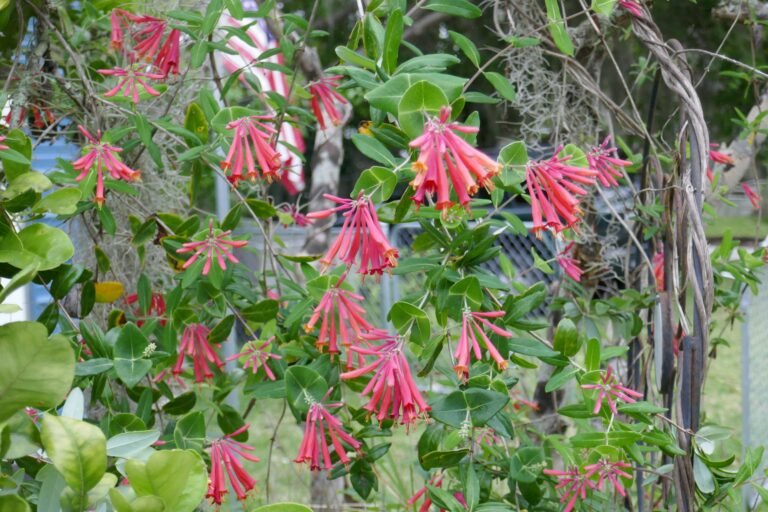
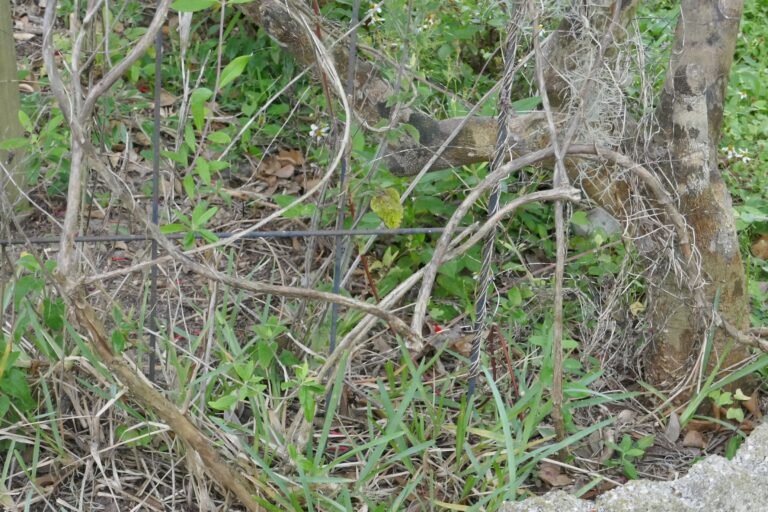
Wildlife Use
The bright red, tubular, flowers are a favorite nectar source for hummingbirds and you may see territorial disputes with the hummingbirds around your coral honeysuckle because they love the flowers. In the below photograph you can see a hummingbird perched among the branches guarding its nectar source from other hummingbirds.
As I said in the flower section the tubular flowers need long tongued pollinators such as hummingbirds, hummingbird moths, and the large yellow sulphur butterflies. Bees will occasionally cut into the side of the base of a flower to get access to the nectar but I don’t see it that often.
The fruit starts out as small green berries and then ripens to a larger bright red, juicy, berry that is eaten by songbirds and small mammals.
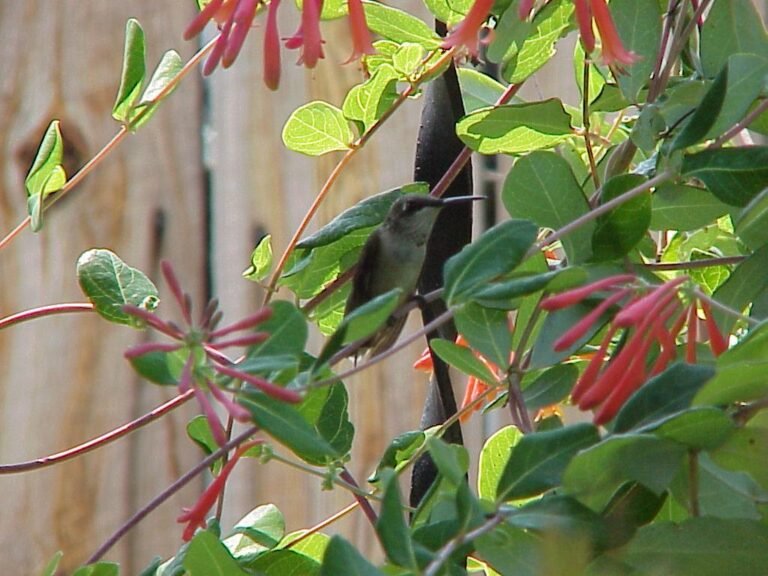
Propagation
Coral honeysuckle can be grow from seed, root cuttings, or transplants.
The habit of this vine is to root at leaf nodes when they contact the soil so it is very easy to find rooted pieces of vine to start new plants. Remove the soil to expose the roots at a node and cut the vine before and after and gently remove the piece from the ground. If you are a fastidious gardener then it can be transplanted right away as long as you keep it watered until new growth appears. If you don’t get out to garden much then pot in small pots and keep watered until new growth appears and then plant out. When taking root cuttings be sure to remove any flowers or fruit so the cutting can concentrate its energies on recovering from the shock and grow stronger roots.
